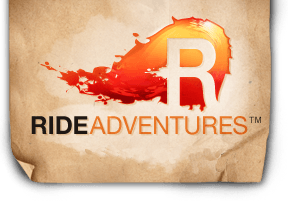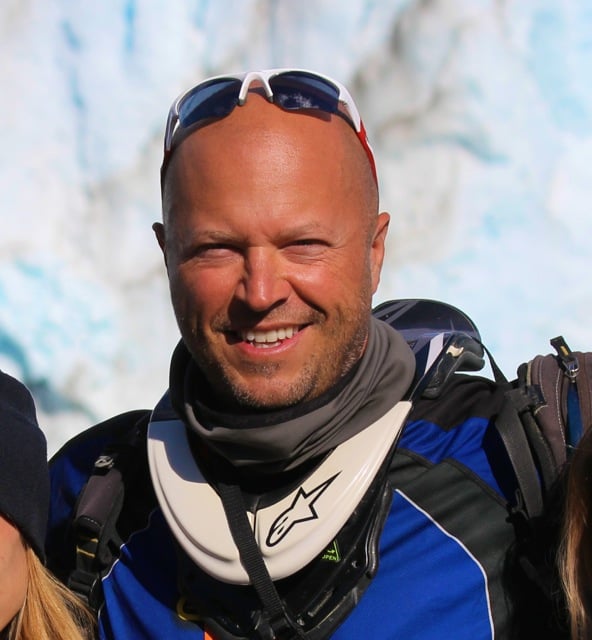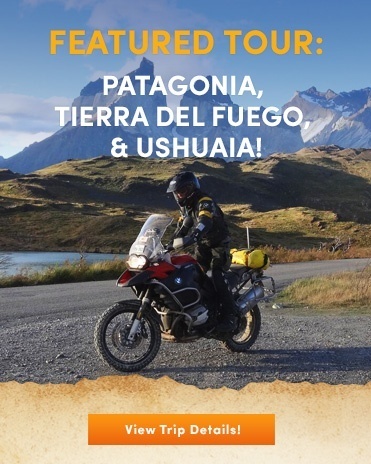What should we call this technique, anyway? It's not jump-starting, as we never touched the battery, and it's not bump-starting, because neither bike wasn't actually rolling. Out of respect for the single cylinder 4-stroke thumper that started the bigger BMW, should we call it Thump-starting?
Hey, it even happens to the Guide of the motorcycle trip from time to time, where an unexplained mechanical or technical issue has us scratching our bald heads. In this case, we were at lunch on the way to Coihaique, Chile on the "Patagonia, Tierra del Fuego & Ushuaia!" tour, and as Steve narrated in the video, the starter on my R1200GS Adventure had an issue that wasn't being discovered after the first attempt at poking around. (After the fact, it was discovered that a well-obscured starter wire had wiggled loose, so the bike was fine and ready to start on it's own once we found the loose wire.)
There are a few reasons we had to resort to this "Thump-starting" technique:
1) We had stopped on a very flat section of road, with no major hills around to gain some downhill momentum with and "pop" the clutch, or bump-start it.
2) The 12:1 compression ratio 1200cc BMW engine is not an easy engine to turn over. As such, whether in 1st, 2nd, or 3rd gear, the rear wheel typically just skids & drags instead of turning the engine over when attempting a classic bump-start. So we needed the bike in 4th or 5th gear, which improves the leverage that the rear wheel has on the engine. The problem with having the bike in such a high gear is that, getting a couple of us in full motorcycle gear to essentially run and push the motorcycle 17-20+ mph (enough for the engine to fire in 4th gear) is not an easy task. Especially after we had just enjoyed a nice Chilean lunch!
3) Why not just use straps and tow the bike with another bike, or push it with a vehicle? These are certainly options as well, but anyone who's tried either method probably learned how potentially dangerous each can be. (Even when trying what Steve suggested, standing with one foot on the strap so it can be released in a hurry. Great tip, Steve!)
A few points to consider before you try doing this yourself:
1) Use Center Stands or Similar - Obviously, the rear wheels of each bike need to be elevated for this to work. Without center stands on the motorcycles though, you'll need to find tree stumps, blocks, or something to elevate the rear wheels so they can spin. If nothing like that is around, the side stand of the bike and some sort of stick or piece of wood could be used to prop the bike up. (Although the bike will be leaning to one side instead of being nice and vertical, and this is a much more unstable setup than having a center stand.)
2) Aligning the Rear Tires - Take a look at the video again, and notice how we had to use the center stands, a sidewalk/curb, a cinder block, and another piece of wood get the 2 tires to "match up" just right. The photo below shows the luggage racks, license plates, rear taillights, and various parts that kept us from easily backing the 2 bikes up to each other. It was either a) take that stuff off, or b) use some nearby options like the blocks and wood to line up the wheels. Whichever is faster or easier for you will probably help you decide.
3) Press the Tires Together - Especially if it's cold or if there's some moisture on the tires, you might need a few extra hands to help "squeeze" the 2 bikes together and create the necessary traction between them. The extra riders are a help in stabilizing the bikes and coordinating the throttle situation as well, but depending on what tires you have on, how big the engines are, etc...a little "squeeze" might be necessary.
Look closely and you'll see when everything was turning right, the clutch was let out completely, and the 2 bikes "shook" right at 0:45 seconds in the video. With all the noise from the running bike though, it's a bit difficult to hear and feel exactly when the defective bike actually starts, so pay close attention and please be careful when trying this. As the outcome of this little exercise may determine how much more you ride that day though, surely you'll be successful in figuring this out.
Happy trails, and see you in Patagonia! (Well, only if you contact us about such a trip.)



